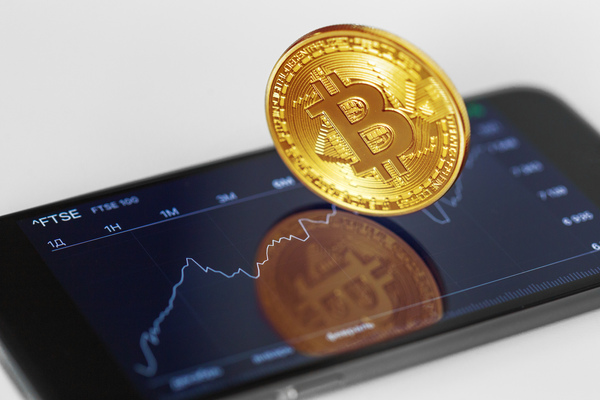In an age dominated by digital innovation and technological advancement, one question continues to captivate the minds of individuals and institutions alike: What is Bitcoin and how does it work? Born from the enigmatic vision of Satoshi Nakamoto in 2008, Bitcoin has transcended mere curiosity to become a global phenomenon, reshaping the landscape of finance and challenging the very foundations of traditional currency systems.
At its core, Bitcoin represents more than just a digital currency; it embodies a revolutionary concept of decentralization, transparency, and financial sovereignty. But amidst the hype and speculation surrounding Bitcoin, understanding its fundamental principles is paramount. So, let us begin a journey to unravel the mysteries of Bitcoin, exploring its origins, mechanisms, and implications for the future of money. And perhaps, along the way, we may find answers to the question that continues to intrigue us all: What is Bitcoin, and how does it work?
What is Bitcoin?

Bitcoin is a digital or virtual currency that operates on a decentralized peer-to-peer network, independent of any central authority or government. Introduced in a 2008 whitepaper by an anonymous entity known as Satoshi Nakamoto, Bitcoin represents a groundbreaking innovation in the field of finance. Unlike traditional fiat currencies, which are issued and regulated by governments, Bitcoin relies on cryptographic techniques to secure transactions and control the creation of new units.
At its core, Bitcoin is built upon blockchain technology, a distributed ledger system that records all transactions in a transparent and immutable manner. Each transaction is verified and added to the blockchain by a network of computers, known as miners, through a process called mining. Miners compete to solve complex mathematical puzzles, with the first to solve the puzzle rewarded with newly created bitcoins and transaction fees.
One of the key features of Bitcoin is its fixed supply. The total number of bitcoins that will ever exist is capped at 21 million, ensuring scarcity and potentially increasing its value over time. This scarcity is enforced through a process called halving, where the reward for mining new bitcoins is reduced by half approximately every four years.

Bitcoin transactions are conducted using digital wallets, which store the necessary cryptographic keys to access and transfer bitcoins. These wallets can be software-based, such as mobile or desktop applications, or hardware devices designed specifically for storing bitcoins securely.
Bitcoin’s pseudonymous nature allows users to maintain a degree of privacy while conducting transactions. Instead of using real-world identities, users are identified by unique alphanumeric addresses. However, it’s important to note that Bitcoin transactions are not entirely anonymous, as all transactions are recorded on the public blockchain and can be traced back to their origin.
As per data available in Coinstats.app, “Bitcoin’s current value stands at USD 21,721.76, with future prices hinging on its perceived value and technological advancements like the Lightning network. Predictions vary, with projections ranging from $109,442.30 to $206,724.34 by 2030, and market analysts suggesting a potential rise to $85,121.79 by 2025. However, some bearish forecasts indicate a dip to $19,456.41 in the Bitcoin market by 2023.“
Despite its decentralized and borderless nature, Bitcoin has faced regulatory scrutiny and volatility throughout its existence. Governments and financial institutions have grappled with how to regulate and integrate Bitcoin into existing financial systems, while investors navigate its price fluctuations and market dynamics.
In recent years, Bitcoin has gained increasing acceptance as a legitimate asset class and payment method. Major companies and institutions have begun to adopt Bitcoin, and financial products such as futures contracts and exchange-traded funds (ETFs) have been introduced to facilitate investment in Bitcoin.
As Bitcoin continues to evolve and mature, its impact on the global financial landscape remains profound. Whether viewed as a speculative investment, a hedge against inflation, or a revolutionary form of money, Bitcoin has undoubtedly sparked a paradigm shift in how we perceive and transact value in the digital age.
Must Read: What is a Mutual Fund? How Mutual Funds Work?
How Does Bitcoin Work?
To comprehend how Bitcoin operates, one must grasp its fundamental components and processes:

- Blockchain Technology: At the core of Bitcoin lies blockchain technology, which serves as a distributed ledger recording all transactions. The blockchain consists of a chain of blocks, with each block containing a set of transactions. These blocks are linked together chronologically, forming an immutable record of every Bitcoin transaction ever executed.
- Decentralization: Unlike traditional currencies controlled by central authorities, Bitcoin operates in a decentralized manner. It relies on a network of computers (nodes) worldwide, collectively maintaining the blockchain and validating transactions through a process known as mining.
- Mining: Mining is the process by which new bitcoins are created and transactions are confirmed on the blockchain. Miners compete to solve complex mathematical puzzles, and the first one to solve it successfully adds a new block of transactions to the blockchain. As a reward for their efforts, miners receive newly minted bitcoins and transaction fees.
- Wallets: Bitcoin wallets are digital tools that allow users to store, send, and receive bitcoins securely. Each wallet has a unique address, which serves as a destination for receiving bitcoins. Wallets can be software-based, hardware-based, or even paper-based, offering varying levels of security and accessibility.
- Transactions: Bitcoin transactions involve the transfer of value from one wallet to another. To initiate a transaction, the sender must sign it with their private key, a cryptographic signature that proves ownership of the bitcoins being transferred. Once broadcasted to the network, miners validate and include the transaction in a block, ensuring its authenticity.
- Consensus Mechanism: Consensus among network participants is crucial for the integrity and security of the Bitcoin network. The consensus mechanism employed by Bitcoin is called Proof of Work (PoW), where miners invest computational power to validate transactions and secure the network. This consensus mechanism prevents double-spending and ensures the immutability of the blockchain.
- Limited Supply: Unlike fiat currencies, Bitcoin has a predetermined supply limit of 21 million bitcoins. This scarcity is programmed into the protocol, with new bitcoins issued through mining diminishing over time. The finite supply of Bitcoin is one of its defining characteristics, often cited as a hedge against inflation.
Where Can You Buy Bitcoin?
Bitcoin, being the flagship cryptocurrency, enjoys widespread availability on numerous crypto exchanges worldwide. Whether you’re looking to purchase Bitcoin with fiat currency or exchange it for other cryptocurrencies, there’s a plethora of platforms to choose from. Here are some of the major crypto markets where you can buy Bitcoin:
- Binance: As the world’s largest crypto exchange by trading volume, Binance offers a robust platform for buying and selling Bitcoin, with a wide range of trading pairs and features.
- Coinbase: A popular choice for beginners, Coinbase provides a user-friendly interface for purchasing Bitcoin and other cryptocurrencies, along with educational resources to help users get started.
- OKX: Known for its diverse range of trading products and services, OKX offers a secure and efficient platform for buying and selling Bitcoin, catering to both individual and institutional traders.
- Kraken: With a strong focus on security and regulatory compliance, Kraken is a reputable exchange for buying and trading Bitcoin, offering advanced trading features and competitive fees.
- Huobi Global: Huobi Global provides a comprehensive platform for trading Bitcoin and other digital assets, with support for various payment methods and a global user base.
- Bitfinex: Offering advanced trading tools and liquidity, Bitfinex is a popular choice for experienced traders looking to buy and sell Bitcoin, with a wide range of trading pairs available.
Explained What is Bitcoin? in 3 Minutes:
What Lies Ahead for Bitcoin?
In conclusion, Bitcoin has emerged as a transformative force in the realm of finance, challenging traditional notions of currency and revolutionizing the way we think about money. Its decentralized nature, enabled by blockchain technology, offers a vision of financial autonomy and transparency, free from the control of centralized authorities. Yet, Bitcoin’s journey is still unfolding, with ongoing debates over regulation, scalability, and its role in the broader economy.
Despite these challenges, Bitcoin’s resilience and growing acceptance underscore its potential to shape the future of global finance. Whether viewed as a speculative asset, a store of value, or a medium of exchange, Bitcoin continues to captivate the imagination of investors, technologists, and policymakers alike. As we navigate this ever-evolving landscape, one thing remains clear: the story of Bitcoin is far from over, and its impact on the world of finance will continue to unfold in the years to come.
FAQs:
Bitcoin is a decentralized digital currency that operates on a peer-to-peer network, allowing users to send and receive payments without the need for intermediaries like banks.
Bitcoin was introduced by an anonymous individual or group known as Satoshi Nakamoto in a 2008 whitepaper titled “Bitcoin: A Peer-to-Peer Electronic Cash System.”
Bitcoin transactions are recorded on a public ledger called the blockchain, which is maintained by a network of computers known as miners. Transactions are verified through a process called mining, where miners solve complex mathematical puzzles to add new blocks to the blockchain.
Blockchain is a decentralized and distributed ledger technology that records all transactions made with Bitcoin. It ensures transparency, security, and immutability by linking together blocks of transaction data in a chronological and cryptographically secure manner.
New bitcoins are created through a process called mining. Miners compete to solve complex mathematical puzzles, and the first miner to solve the puzzle is rewarded with newly created bitcoins. This process also verifies and secures Bitcoin transactions.
The total supply of Bitcoin is capped at 21 million coins. This scarcity is enforced by the Bitcoin protocol to prevent inflation and maintain the value of the currency.
While Bitcoin itself is not inherently illegal, its pseudonymous nature has led to its use in some illegal activities. However, the majority of Bitcoin transactions are legitimate, and there are many legitimate use cases for Bitcoin as a form of digital currency.
Bitcoin is secured through cryptographic techniques such as public-key cryptography and the use of the blockchain. However, like any technology, Bitcoin is not immune to security risks, and users must take precautions to protect their wallets and private keys.
Bitcoin operates on a decentralized network, making it difficult for any single entity or government to regulate. However, governments around the world have implemented regulations on Bitcoin exchanges and businesses that deal with Bitcoin to address concerns such as money laundering and terrorism financing.
Bitcoin has generated significant returns for investors over the years, but it is also known for its price volatility. As with any investment, it’s essential to conduct thorough research, understand the risks involved, and only invest what you can afford to lose.








